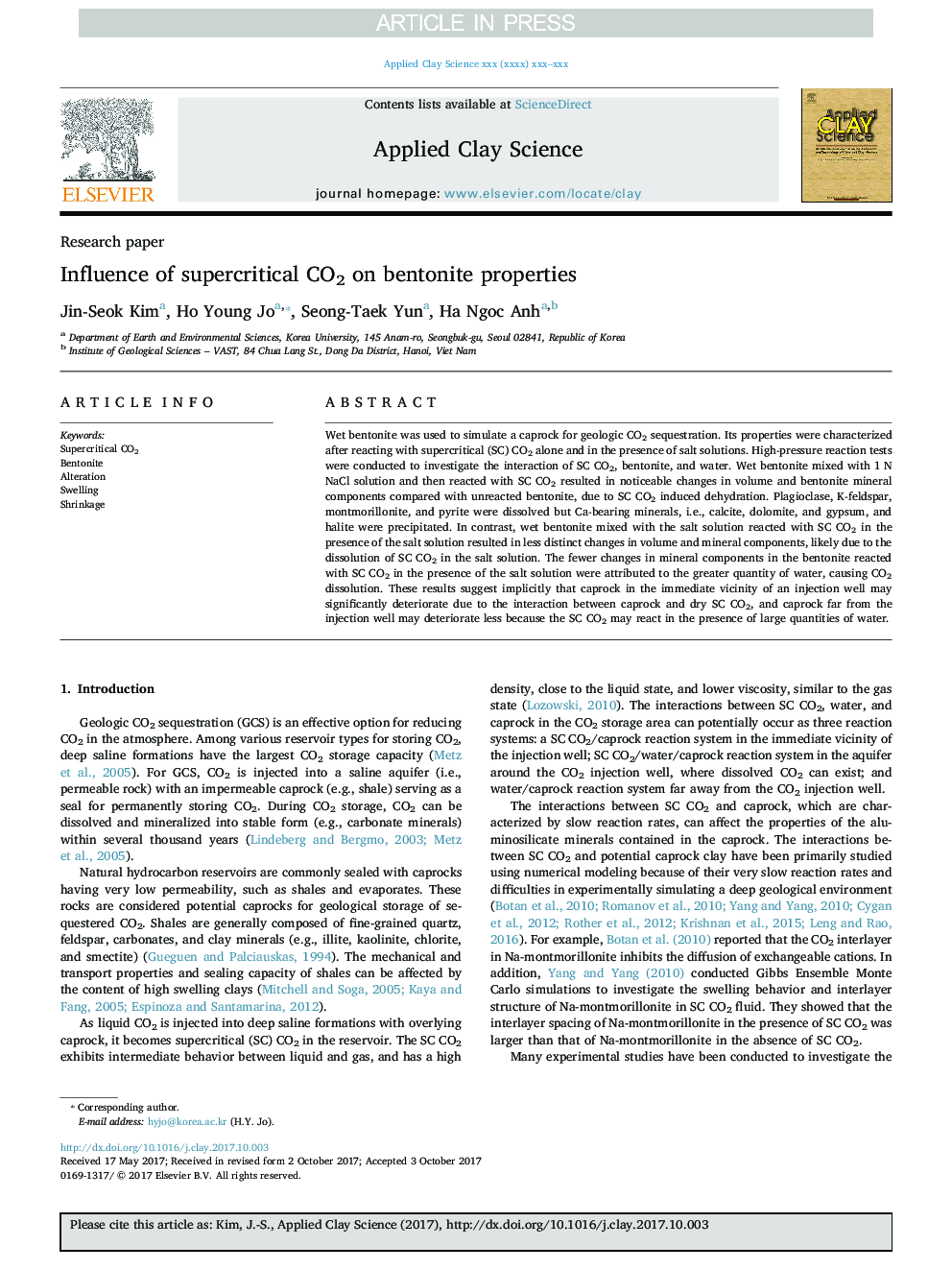| Article ID | Journal | Published Year | Pages | File Type |
|---|---|---|---|---|
| 5468516 | Applied Clay Science | 2017 | 10 Pages |
Abstract
Wet bentonite was used to simulate a caprock for geologic CO2 sequestration. Its properties were characterized after reacting with supercritical (SC) CO2 alone and in the presence of salt solutions. High-pressure reaction tests were conducted to investigate the interaction of SC CO2, bentonite, and water. Wet bentonite mixed with 1Â N NaCl solution and then reacted with SC CO2 resulted in noticeable changes in volume and bentonite mineral components compared with unreacted bentonite, due to SC CO2 induced dehydration. Plagioclase, K-feldspar, montmorillonite, and pyrite were dissolved but Ca-bearing minerals, i.e., calcite, dolomite, and gypsum, and halite were precipitated. In contrast, wet bentonite mixed with the salt solution reacted with SC CO2 in the presence of the salt solution resulted in less distinct changes in volume and mineral components, likely due to the dissolution of SC CO2 in the salt solution. The fewer changes in mineral components in the bentonite reacted with SC CO2 in the presence of the salt solution were attributed to the greater quantity of water, causing CO2 dissolution. These results suggest implicitly that caprock in the immediate vicinity of an injection well may significantly deteriorate due to the interaction between caprock and dry SC CO2, and caprock far from the injection well may deteriorate less because the SC CO2 may react in the presence of large quantities of water.
Related Topics
Physical Sciences and Engineering
Earth and Planetary Sciences
Geochemistry and Petrology
Authors
Jin-Seok Kim, Ho Young Jo, Seong-Taek Yun, Ha Ngoc Anh,
